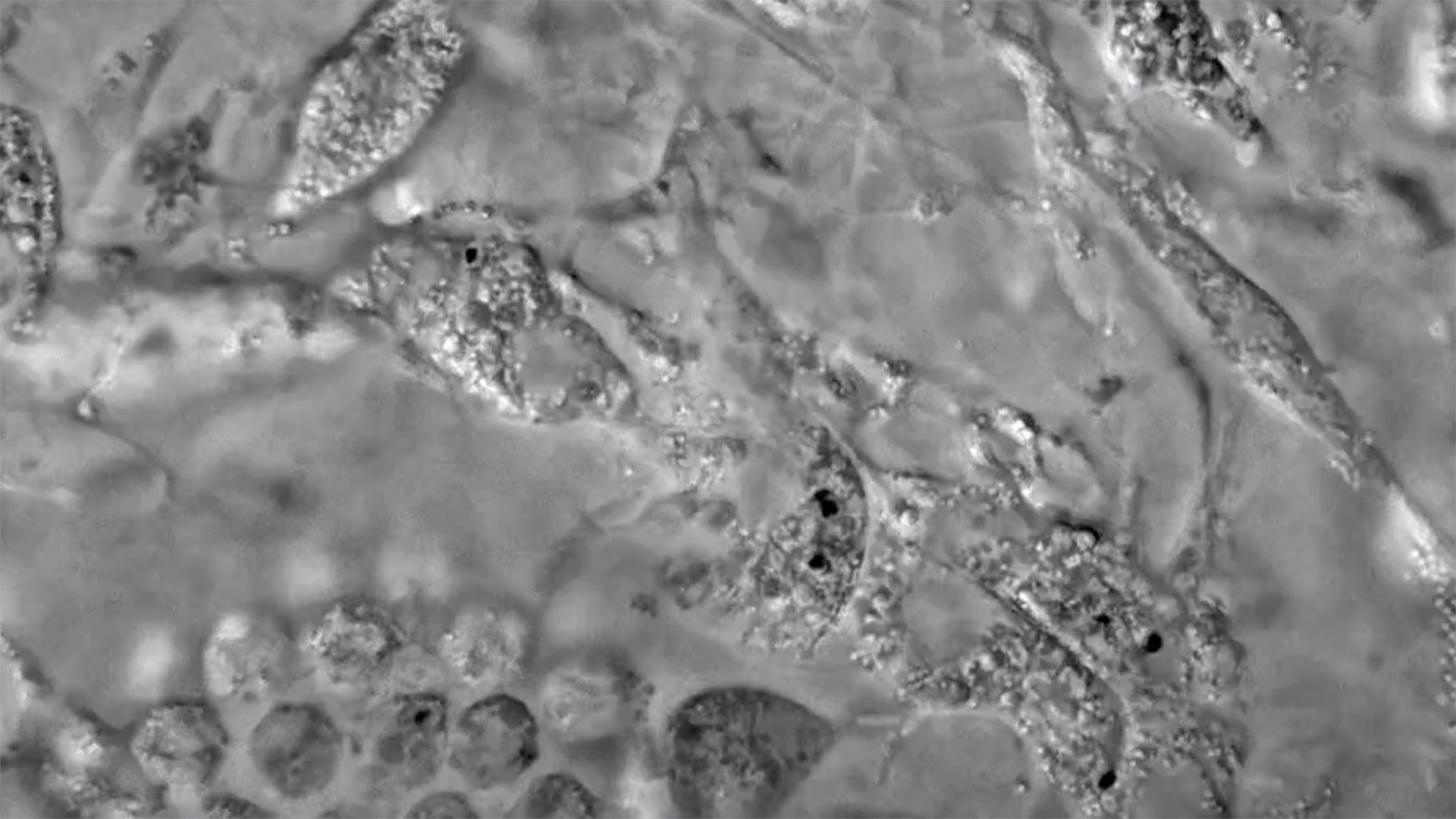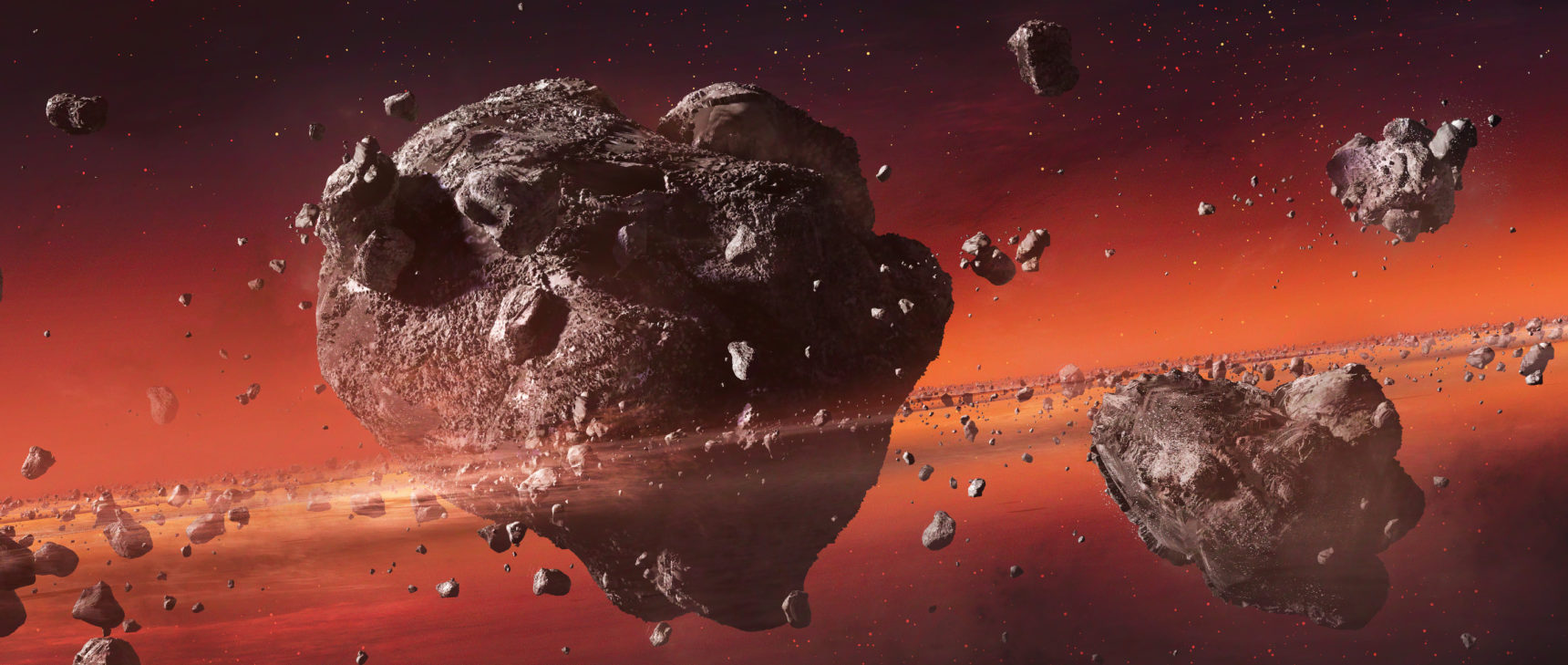Scientists Debate the Origin of Cell Types in the First Animals
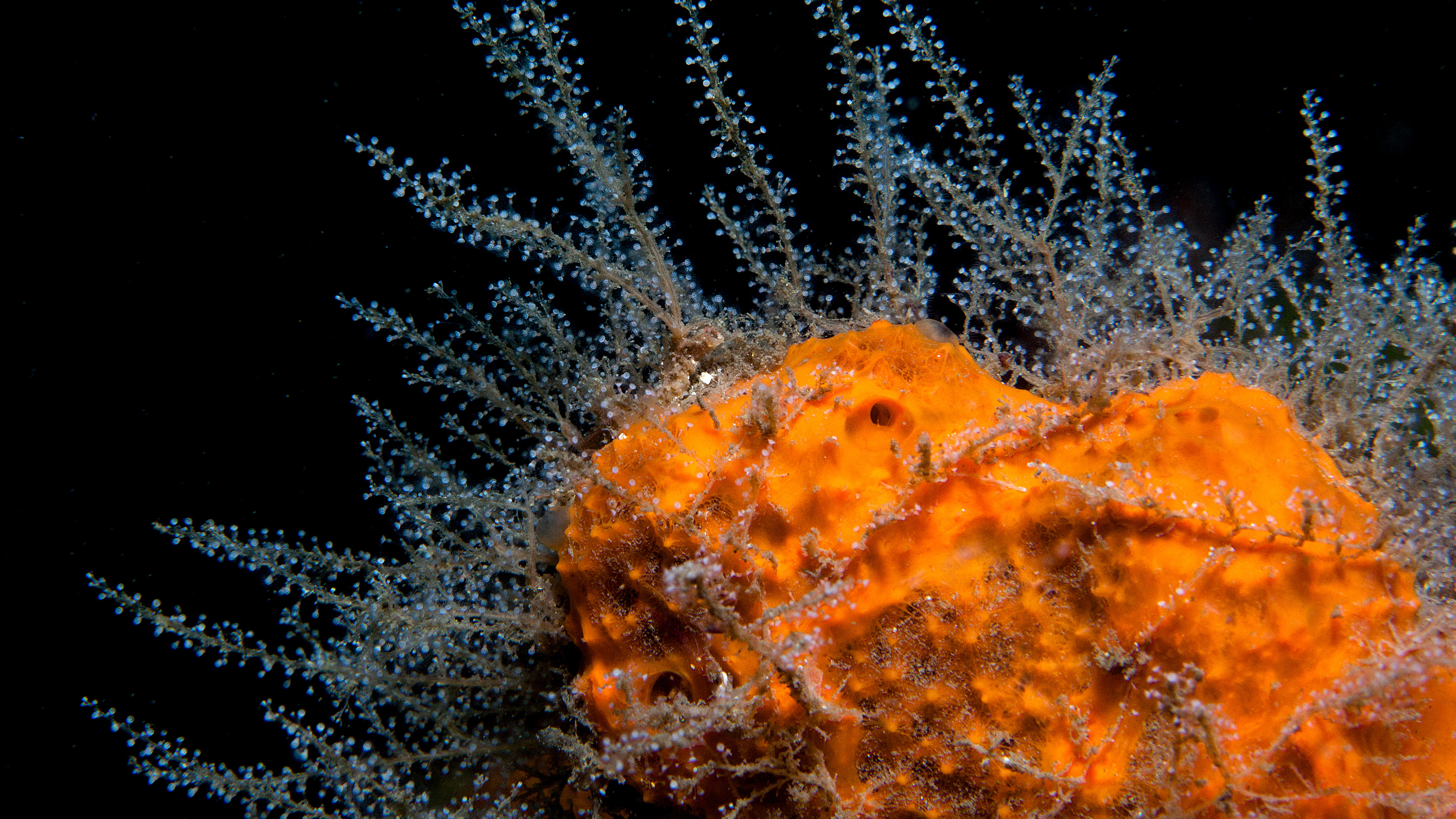
Ancient animals still alive today, such as the sponge and hydroids shown above, hold important clues about how multicellular animal life evolved.
Introduction
From one came many. Some 700 million years ago, a single cell gave rise to the first animal, a multicellular organism that would eventually spawn the incredible complexity and diversity seen in animals today. New research is now offering scientists a fresh perspective on what that cell looked like, and how multicellularity could have emerged from it — a transition that marks one of the most pivotal events in the history of life on Earth.
For well over a century, it has been widely assumed that the ancestors from which the first animal evolved were simple blobs of identical cells. Only later, after the animals formed their own branch on the tree of life, did those cells start to differentiate into various cell types with specialized functions. But now, painstaking genomic analyses and comparisons between the most ancient animals alive today and their closest non-animal relatives are starting to overturn that theory.
The recent work paints a picture of ancestral single-celled organisms that were already amazingly complex. They possessed the plasticity and versatility to slip back and forth between several states — to differentiate as today’s stem cells do and then dedifferentiate back to a less specialized form. The research implies that mechanisms of cellular differentiation predated the gradual rise of multicellular animals.
Now, scientists are reporting the most compelling evidence yet for the new narrative. Their work, and the debate inspired by its publication in Nature last month, also highlights how difficult it is to pin down definitive answers to these kinds of evolutionary questions — and how wide a net researchers have to cast in pursuit of those answers.
Looking for Close Relatives
In the 1860s, the biologists Henry James Clark and William Saville-Kent separately noted a striking resemblance between the cells of two organisms. Choanoflagellates are tiny spherical or egg-shaped cells crowned with a “collar” of fingerlike protrusions surrounding a single flagellum that whips back and forth. These protists stir up water currents with their flagella, sweeping their next meal (usually bacteria) into their collars to eat. Meanwhile, sponges are simple animals made up of many cell types, including choanocytes — collared, flagellated cells that line the chambers inside the sponge and capture its food. Choanocytes look and act remarkably like choanoflagellates, so much so that some scientists posited in the 1980s and ’90s that choanoflagellates might be animals that evolved from sponges and then simplified down to one cell.
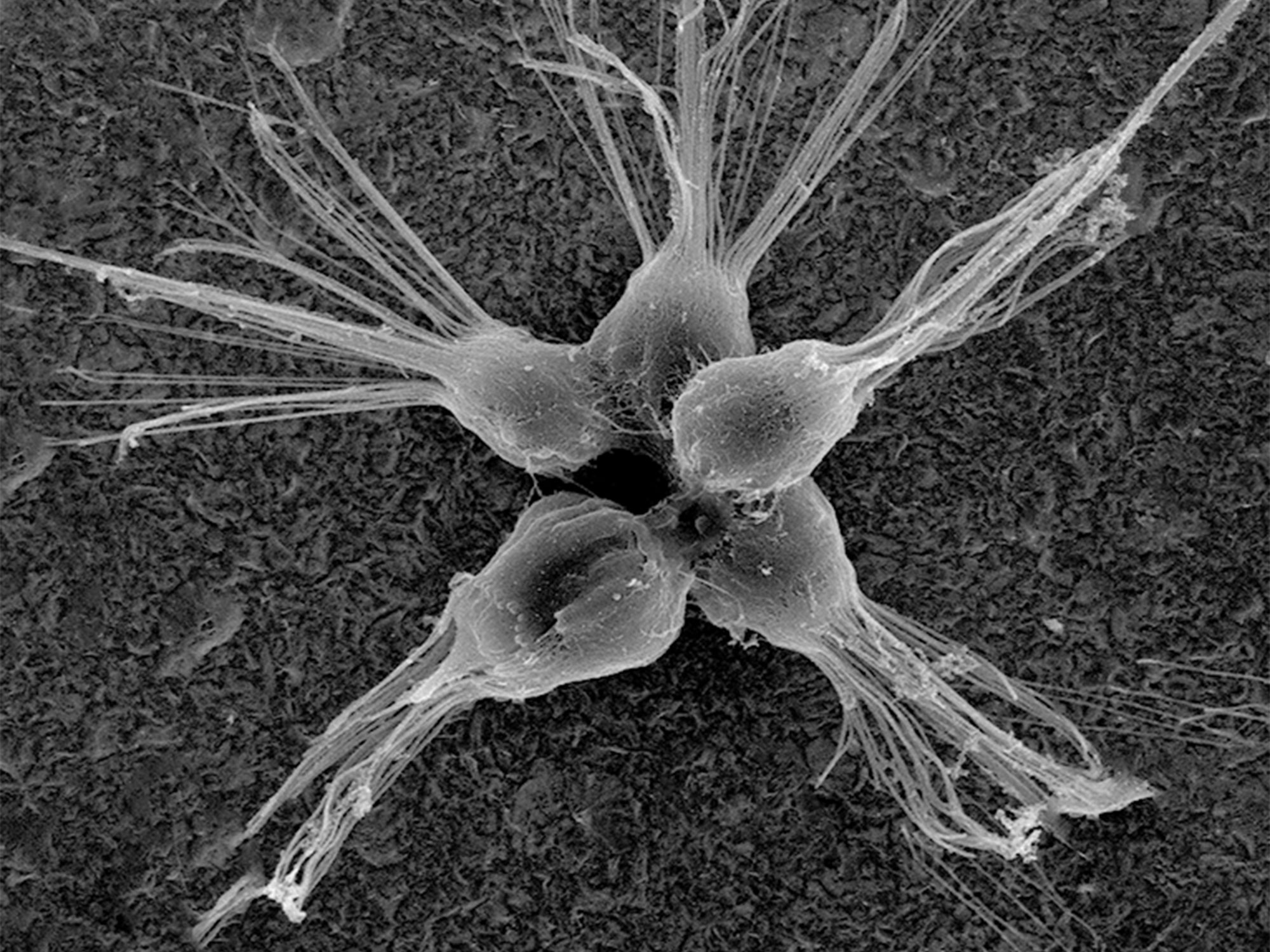
Choanoflagellates are the protists most closely related to animals.
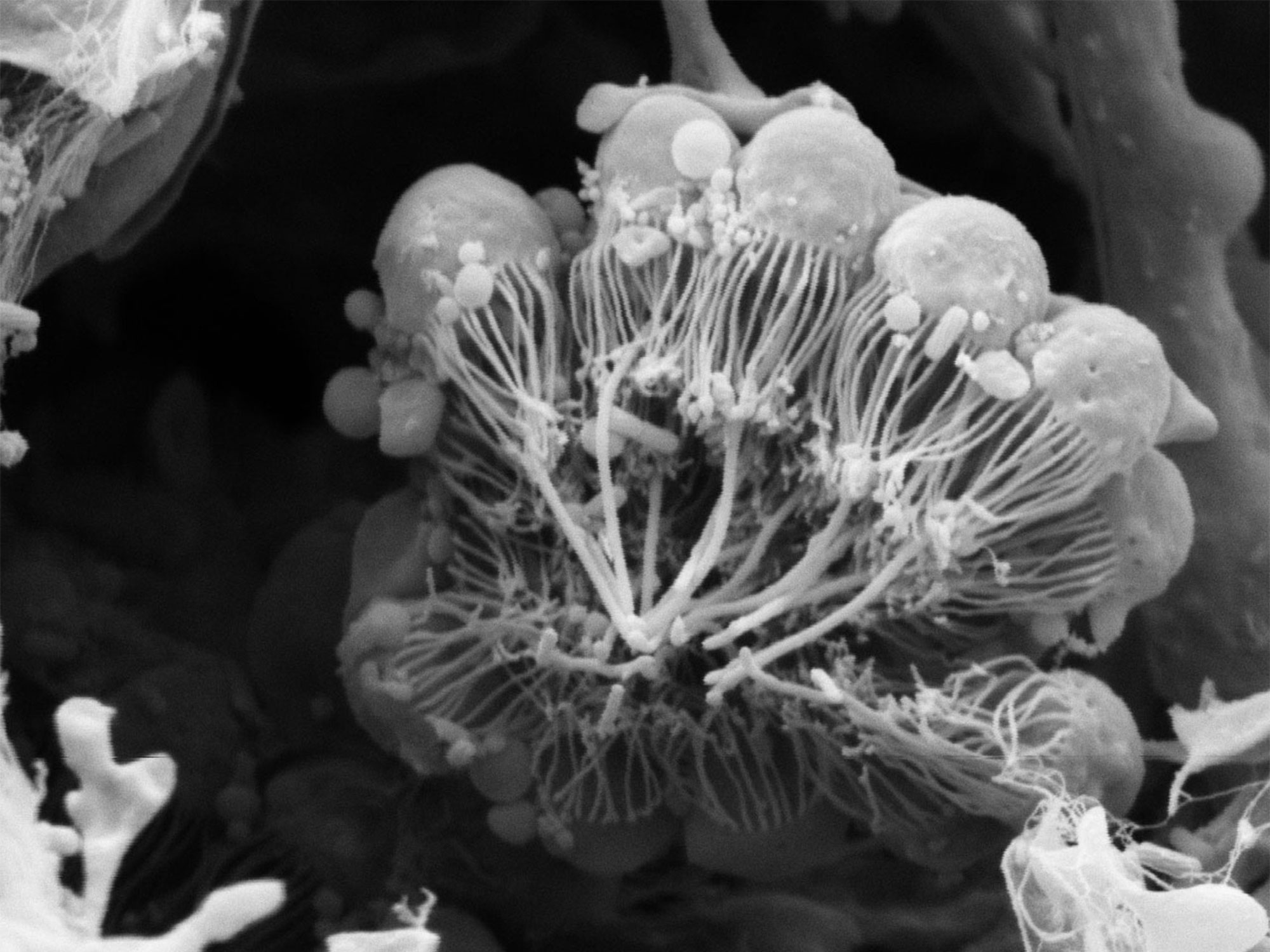
Choanocytes are sponge cells that strongly resemble choanoflagellates and line the animal’s cavities.
Choanoflagellates (top) are the protists most closely related to animals. Choanocytes are sponge cells that strongly resemble choanoflagellates and line the animal’s cavities; they use their signature collar and flagellum to help the sponge trap its food.
Source: Mark Dayel ([email protected]); Rebecca Fieth
Choanoflagellates (left) are the protists most closely related to animals. Choanocytes (right) are sponge cells that strongly resemble choanoflagellates and line the animal’s cavities.
Source: Mark Dayel ([email protected]); Rebecca Fieth
The structural similarities prompted experts to think that the cells shared an ancestor, and that the single-celled choanoflagellates might be the key to understanding how the multicellular sponge came about. Building on this, the famed marine biologist Ernst Haeckel put forth a theory for the evolution of animal multicellularity in 1874, which researchers have since elaborated on: A choanoflagellate-like ancestral cell started it all. Many such cells came together to form a colony, a hollow ball of identical cells that, in turn, gradually differentiated into cell types and tissues with various functions. This eventually led to the first animal, the sponge — and the rest is history.
All the signs indicated that this was the right way to think about animal evolution. In the 2000s, more than a century after Haeckel proposed his theory, genomic evidence confirmed that choanoflagellates were animals’ closest living relatives. “Out of the many single-cell eukaryotes out there, 150 years ago choanoflagellates had been proposed as a close relative of animals,” said Pawel Burkhardt, a molecular biologist at the Sars International Center for Marine Molecular Biology in Norway. “Then the first genome was sequenced, and bam! It actually was really true.”
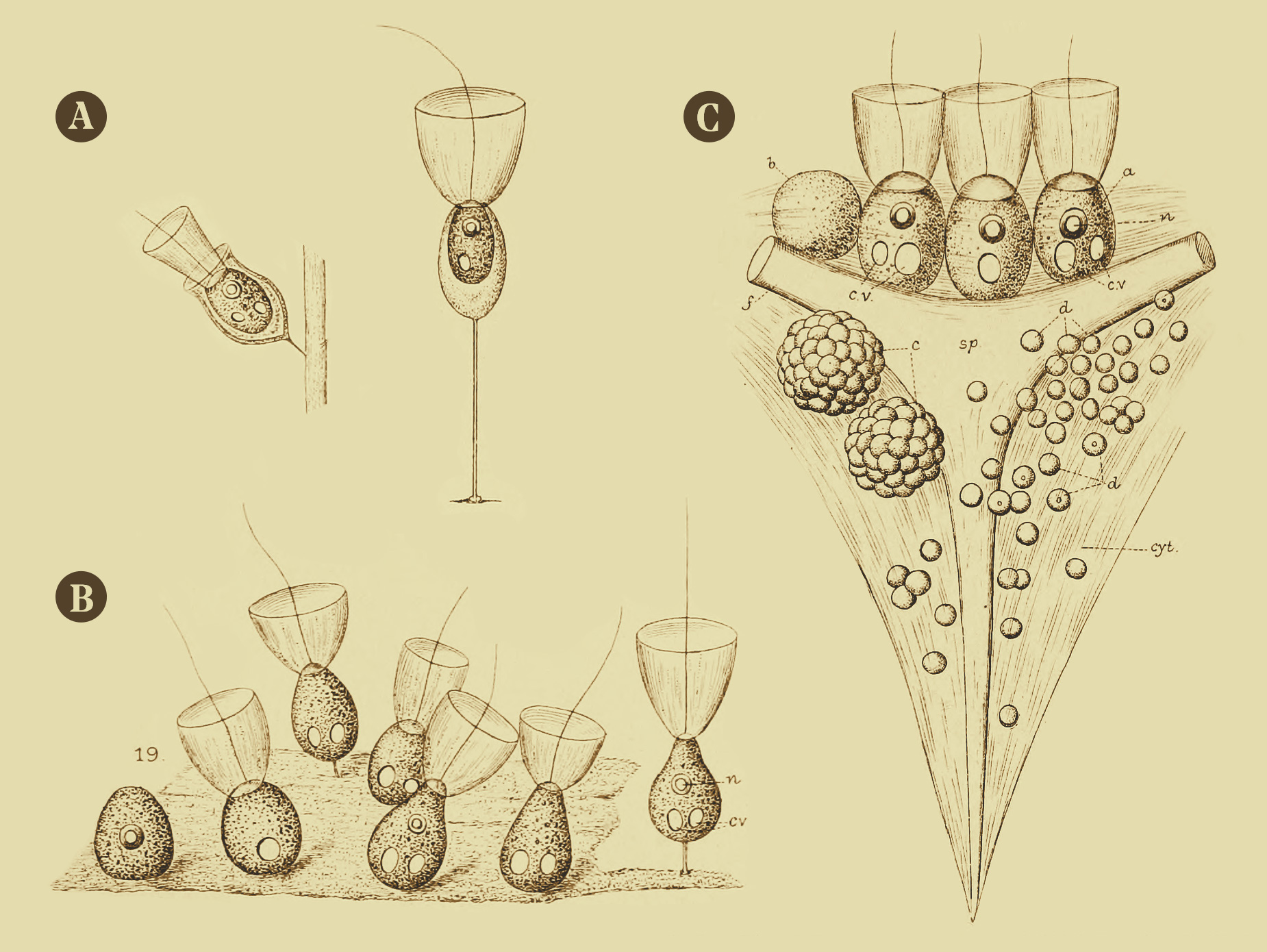
This illustration from 1880 by the biologist William Saville-Kent depicts the remarkable similarity between free-living protists called choanoflagellates (A and B) and a type of cell found in sponges, called a choanocyte (C). Because sponges are thought to be one of the earliest animals to have evolved, this resemblance led scientists to theorize that something like a choanoflagellate started the transition to multicellular animal life.
Adapted by Quanta Magazine; source: A Manual of the Infusoria by William Saville-Kent; based on Fig. 3 in “The Unicellular Ancestry of Animal Development”
“Scientists, including myself, have for a long time enjoyed this choanoflagellate-choanocyte connection,” said David Gold, a geobiologist at the University of California, Davis, “because it tells a clear and elegant story.”
Besides, said Douglas Erwin, a paleobiologist at the Smithsonian Institution’s National Museum of Natural History in Washington, D.C., “You’re going to question Haeckel? How do you question Haeckel? It’s almost like questioning Darwin.”
The First Seeds of Doubt
But uncertainty about that clear and elegant story has been growing over the past decade. The idea that animals arose from a colony of choanoflagellate-like cells implies that cell differentiation evolved after multicellularity did. But “the data is demonstrating that it’s not like that,” said Iñaki Ruiz-Trillo, an evolutionary biologist at the Institute of Evolutionary Biology in Barcelona.
The first complication came in 2008, when a group of scientists, in an effort to more precisely map out the evolutionary relationships among animals on the tree of life, identified comb jellies rather than sponges as the earliest animals. The finding generated controversy. “It’s still very much a heated question,” Gold said, “but I think it forced the community to reappraise the classic narrative.”
Subsequent discoveries continued to fuel the debate over which animal group came first. And some studies uncovered overlooked differences between choanoflagellates and sponge choanocytes. The cells’ shared ancestry began to look less like a foregone conclusion.
Scientists also began to realize that choanoflagellates and two closely related unicellular groups all have complex life cycles that proceed through various cell states. These states essentially act as different cell types — but rather than all existing side by side as in a multicellular organism, they arise sequentially in a single cell. “They have temporal cell differentiation,” Burkhardt said.
And during those life cycles, all three of these protists spend part of their lives in a form that borders on something like primitive multicellularity. Choanoflagellates have a colonial form; the second protist group has amoeba-like cells that aggregate; the cells of the third group grow to have hundreds of nuclei.
This prompted a paper in 2009 that rejuvenated an old alternative to Haeckel’s hypothesis. Back in 1949, the Russian biologist Alexey Zakhvatkin had proposed that multicellular animals evolved when temporally differentiating cells formed colonies and began to commit to particular stages in their life cycles, allowing a few cell types to exist at once. Ruiz-Trillo and his colleagues provided further evidence for this so-called temporal-to-spatial transition. In a series of studies, they showed that certain families of regulatory proteins supposedly unique to animals, including those involved in cell differentiation, were actually already present in their far more ancient unicellular relatives.
Now, a team of researchers led by Sandie Degnan and Bernard Degnan, a married pair of marine biologists at the University of Queensland in Australia, have provided additional support for this view of animal evolution while also taking a swing at the traditional theory’s foundation: the evolutionary link between the choanoflagellates and the sponge choanocytes.
A More Flexible Ancestor
When the team started their project, they “really just wanted to put some meat on the bones of the [traditional] theory,” Bernard Degnan said. To do so, they examined the gene expression in choanocytes and other kinds of sponge cells, then compared those findings with published data on choanoflagellates and two other protists.
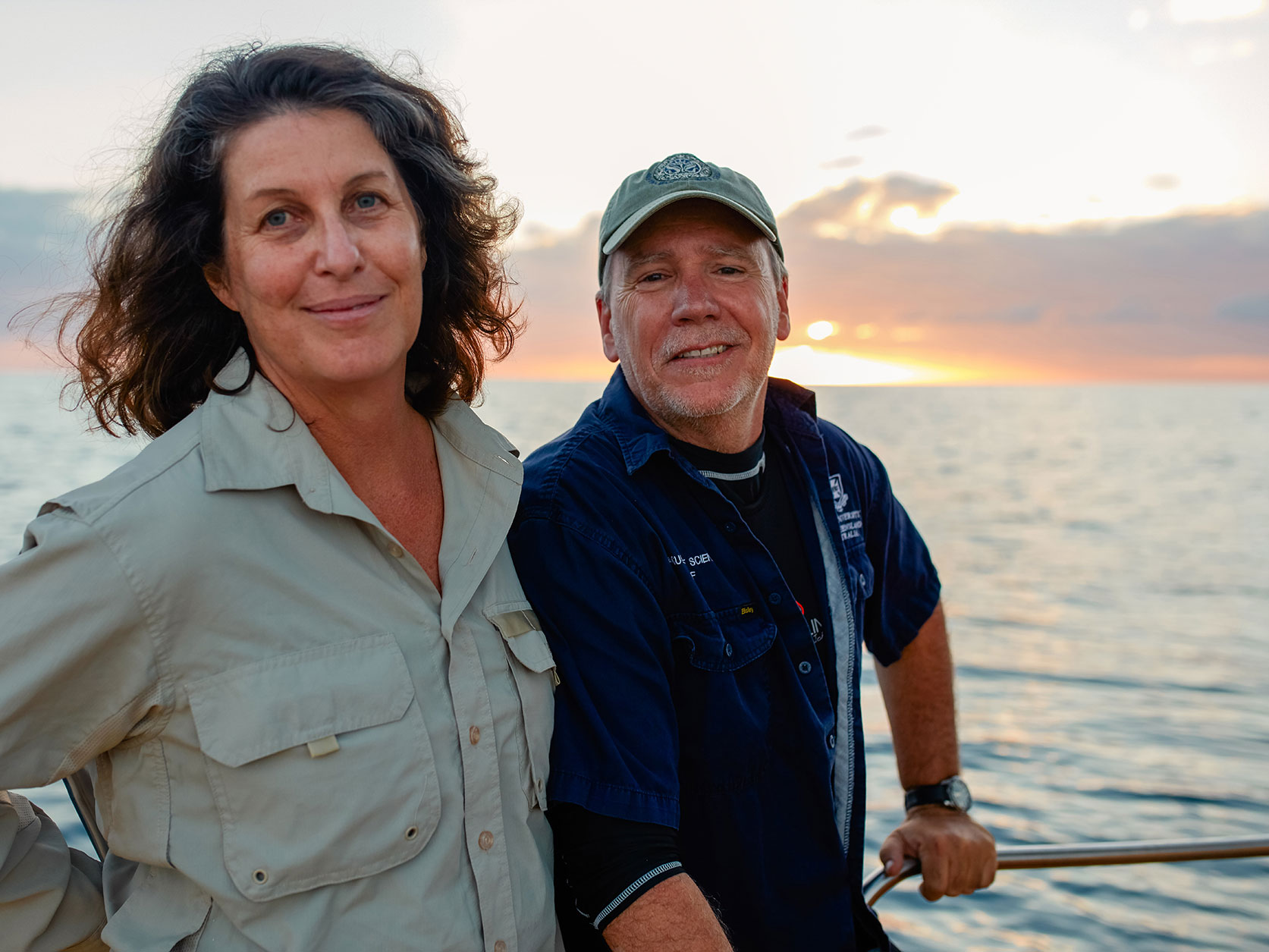
Marine biologists Sandie and Bernard Degnan, pictured here at the University of Queensland’s Heron Island Research Station on the Great Barrier Reef, study sponges and other ancient organisms to uncover new insights into how animal complexity arose.
Courtesy The University of Queensland
They expected to establish that sponge choanocytes had gene expression profiles most like those of choanoflagellates. Instead, they found that another type of sponge cell did.
That cell type, called an archaeocyte, acts like a stem cell for the sponge: It can differentiate into any other cell type the animal might need. Some of the gene expression patterns in archaeocytes are significantly similar to those of the protists during particular life cycle stages, according to Bernard Degnan. “They’re expressing genes that suggest that they have an ancestral regulatory system,” he said. “All animals are just variations on that theme that was created a long time ago.”
Moreover, the choanocytes seemed to be unexpectedly transient. “The choanocytes, which are supposed to be the bedrock of all animal origins … are almost ephemeral,” he said. “They don’t stay stably in that state, but kind of quickly dedifferentiate into these stem cells, the archaeocytes.”
To Gold, who was not involved in the study, this result is the strongest evidence yet that sponge choanocytes should not necessarily be used as “some sort of proxy for the origin of animals.”
Bernard Degnan thinks it’s possible that choanoflagellates and sponge choanocytes arrived independently at their collared, flagellated architecture. In the shared ancestry of choanoflagellates and sponges there could have been something like an archaeocyte or a pluripotent stem cell. “It transited between different cell types, and those cell types then became stable,” he said. “And essentially that’s what gave rise to true multicellularity.” Later, as animals got bigger and more complex, their cells had to become more precise, specialized and fixed in their identities, but they lost a lot of their versatility in the process.
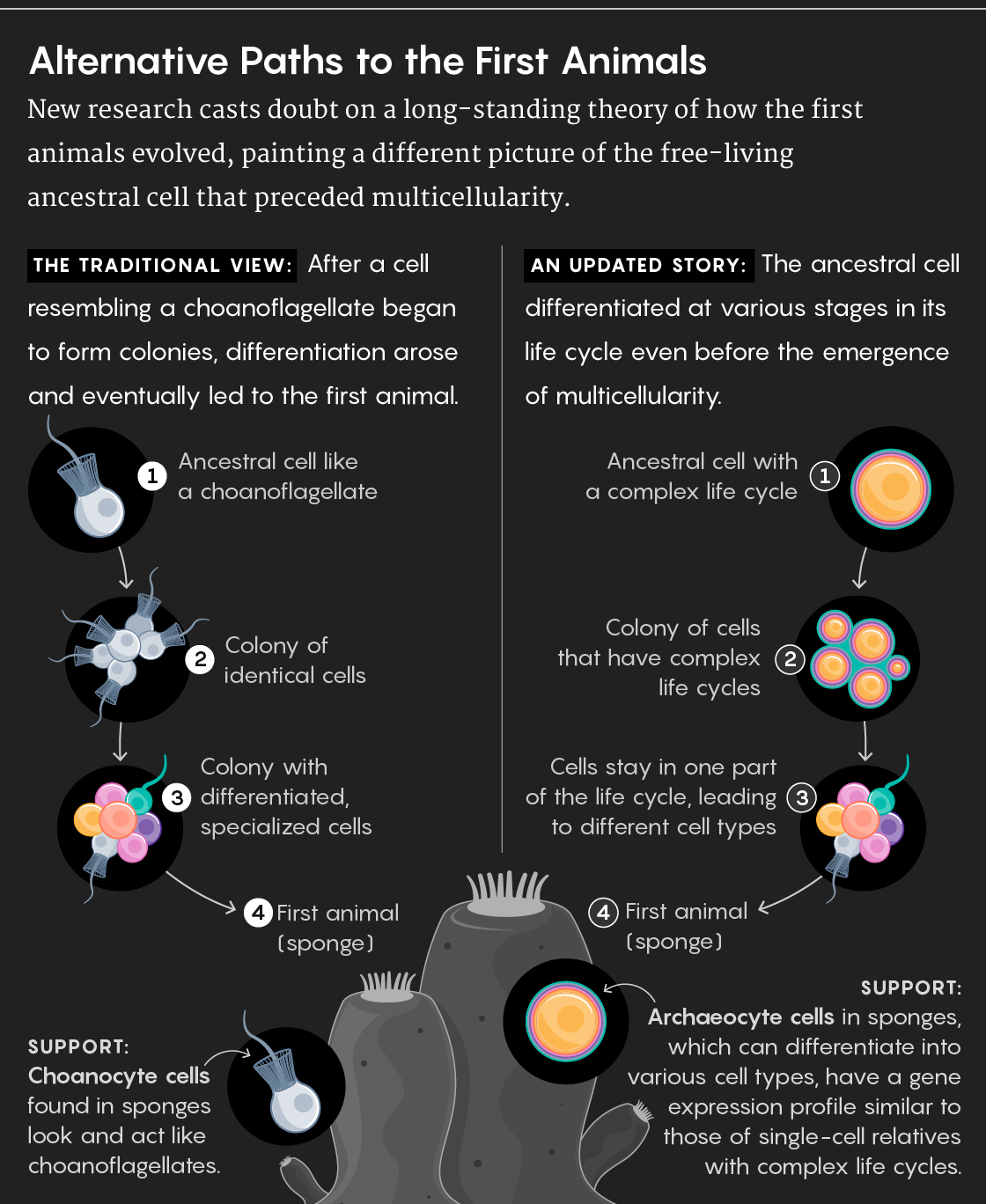
Lucy Reading-Ikkanda/Quanta Magazine
In retrospect, this version of multicellularity’s origin makes a lot of sense. According to some experts, we can think of the single-celled organisms that came before animals as stem cells of sorts: They could go on dividing forever, and they could perform a variety of functions, including reproduction. Other early animals, such as jellyfish, show a great deal of that seemingly ancestral plasticity as well.
“Stem cells are something people have been working on for years” in studies of development, wound healing and cancer, Ruiz-Trillo said. Now, it’s becoming clear that they will be “interesting for understanding evolution as well,” for discovering how animals came to be.
A Path Toward Reconciliation
Not everyone agrees entirely with the Degnans’ conclusions. Drawing inferences from gene expression profiles isn’t so straightforward. “Dig into [it], and you could interpret some data completely differently,” Burkhardt said. Differences in gene expression don’t necessarily preclude two cell types from sharing ancestry.
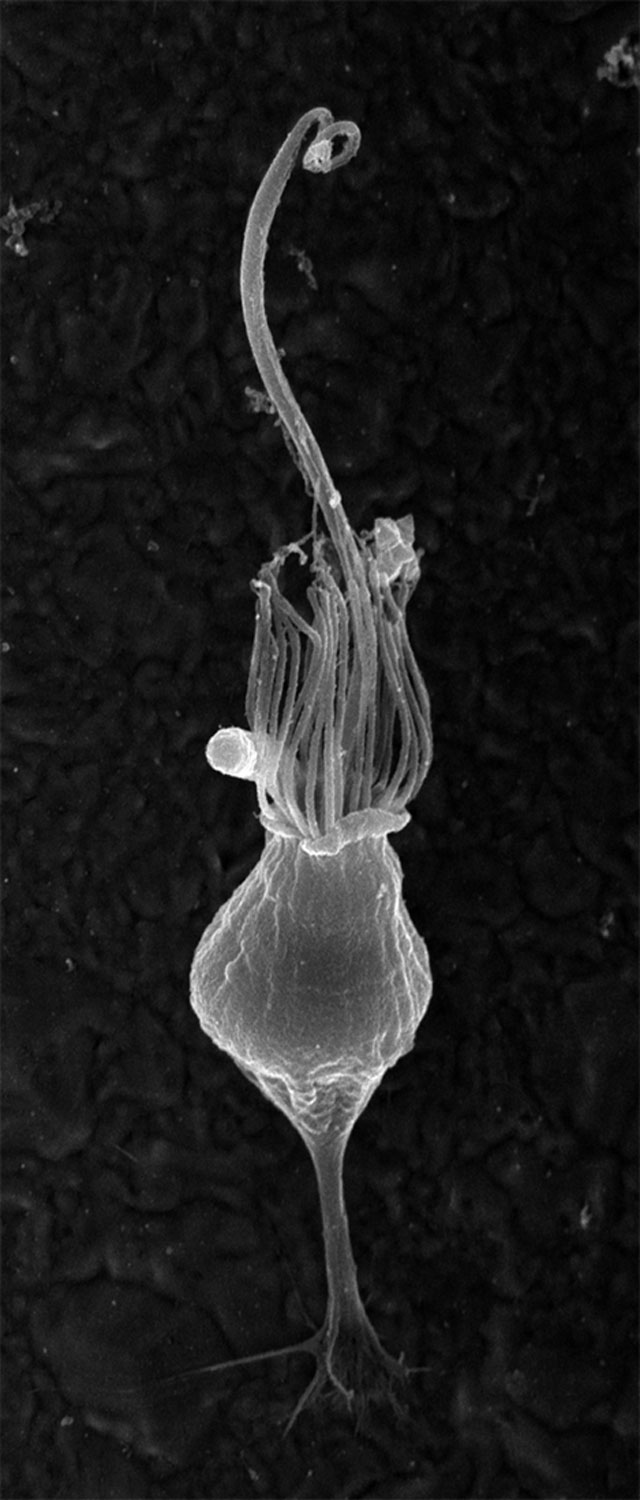
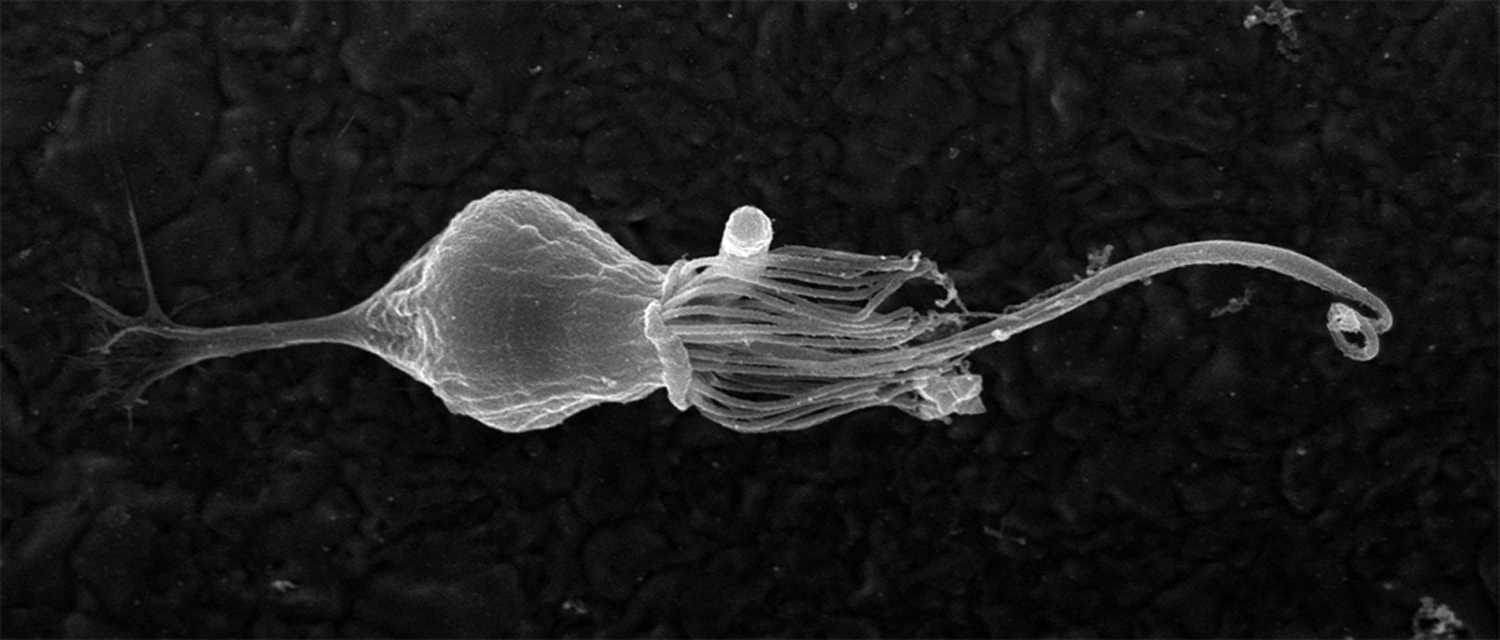
This choanoflagellate, extracted from a colony, uses its signature collar and flagellum to trap food — much like choanocyte cells do in sponges.
Source: Mark Dayel ([email protected])
Erwin agreed. Such data, he said, “is a snapshot [taken] at a particular point in time.” Given that choanoflagellates and sponge choanocytes have been evolving on their own for the past 700 million years, it makes sense that they express very different genes.
In any comparison of modern organisms, “you are looking at animals that have a history of loss and gain,” said Maja Adamska, an evolutionary developmental biologist at the Australian National University who did not participate in the Degnans’ study. “You risk that you will oversimplify your findings.”
Other sponge species, she added, don’t have archaeocytes at all. Instead, their choanocytes perform those stem cell-like roles. “I suspect that if we did a comparison in [those choanocytes],” Adamska said, “we would have found higher similarity to choanoflagellates.”
Adamska thinks that the first animal could very well have been a pancake of stemlike cells that often shifted their identities. She also thinks that the gene expression comparison doesn’t rule out the evolutionary ties between choanoflagellates and the first multicellular animal cells. “In fact, I strongly believe that my ancestors did have choanocytes,” she said.
The two theories about the origins of animal multicellularity aren’t mutually exclusive. “I think there’s a place for both choanoflagellate-like features and [temporal differentiation] features in the last common ancestor we are trying to paint,” Adamska said. “I don’t see the contradiction there.” She and her colleagues are now working on profiling gene expression in sponges without archaeocytes to test this idea further.
Hints of a combined theory are already emerging from Burkhardt’s lab. In a preprint they posted on biorxiv.org in May, Burkhardt and his colleagues found that the cells in a choanoflagellate colony are not all identical: They differ in their morphology and in the ratio of their organelles. These observations, he said, suggest that spatial cell differentiation was already happening in the choanoflagellate lineage, and perhaps even earlier — a possibility that blends the new ideas (that the capacity for differentiation is ancient and the transition to animal multicellularity was gradual) with the old (that this could happen with choanoflagellate-like cells).
So while there’s still no definitive answer on what exactly the first animal looked like, the picture is getting clearer. “We are getting closer to understanding where we came from in the depths of time,” Adamska said. “And I think that is so cool.”
